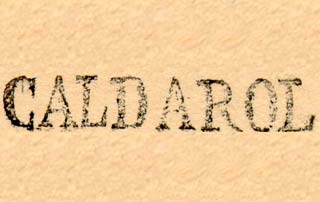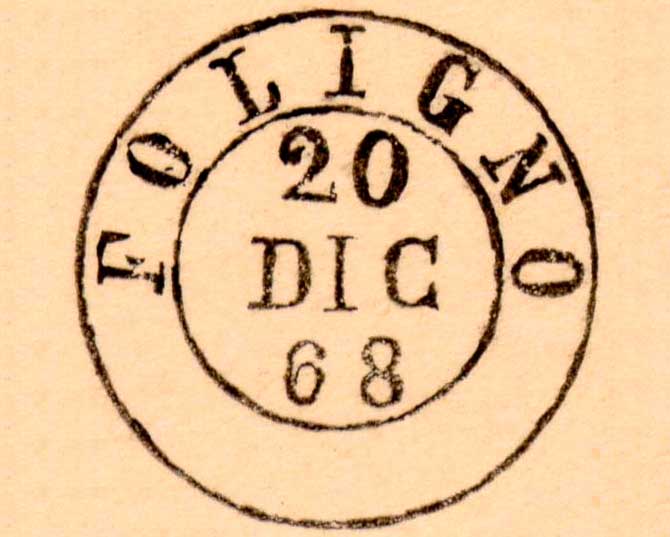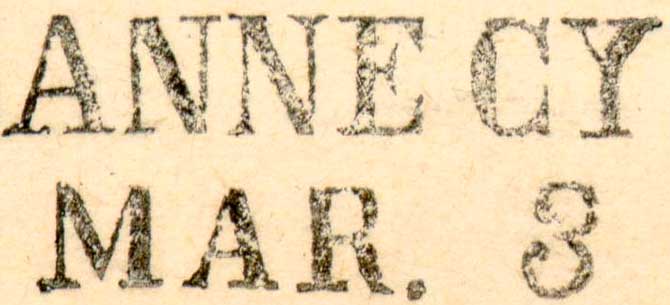Spud Papers – Parma
 1852. 25 Centisimi, Black on Color.
1852. 25 Centisimi, Black on Color.
Genuine
Lithographed. The point of the fleur-de-lis does not touch the top of the containing circle; indeed, there are two lines of shading to be seen above the point. There is a single line of shading in each of the bottom tails of the said figure. The little cross on the top of the crown touches the border exactly between the two words, STATI PARM. There is only one stop after PARM., and that is level with the center of the M. The groundwork, behind the fleur-de-lis, is composed of extremely fine lines, very close together; and the groundwork behind the crown, consists of small, square dots of black. The Etruscan pattern down each side of the stamp is very broad, much broader than any of the lettering.
Forged
Lithographed. The point of the fleur-de-lis touches the top of the containing circle. The right bottom tail of the said ornament has no line of shading in it, though the others have. The little cross on the top of the crown comes under the 1 of STATI. There is a colon after PARM. The ground, behind the fleur-de-lis, consists of coarse lines, wide apart; and the groundwork behind the crown is formed by coarse crossed black lines of shading, not in the least like the genuine; indeed, I think this will form the easiest test. The Etruscan pattern, down each side of the stamp, is not so broad as the lettering. This forgery is not nearly so successful as those described above; and I think our readers need not be very much alarmed at it. The forged postmark is very peculiar, consisting of a large rectangle, containing crossed oblique lines, forming a sort of lattice work. I have not yet seen this postmark on any of the genuine; but I expect that it is to be found, as the forgers would not go out of their way to invent such a remarkable one. My own used copies are postmarked with an undecipherable blotch only.
From “The Spud Papers” by Atless, Pemberton & Earée, 1871-1881.
![]() See also –> Fournier Forged Cancellations – Parma
See also –> Fournier Forged Cancellations – Parma













































